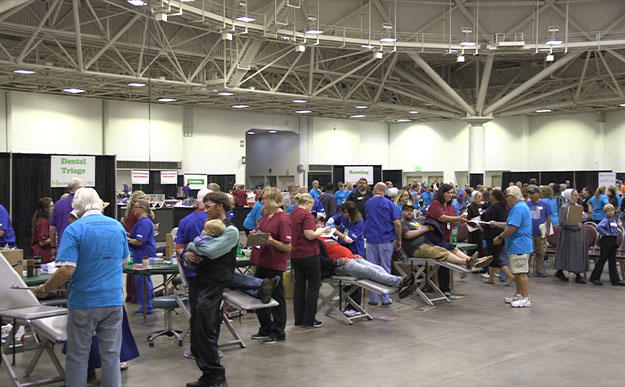Dental working group gets to 'yes' on legislative priorities for oral health equity

A working group comprised of dental providers, state officials and lobbyists is making headway toward ensuring high-quality, lasting dental care for low-income populations throughout Minnesota.
The Get to Yes Coalition brings together dental safety net clinics from across the state, along with their lobbyists and Department of Human Services (DHS) officials, to explore long-term solutions for Critical Access Dental (CAD) providers. Their work has fostered a sense of camaraderie and partnership, while also providing actionable recommendations for the state.
Since 2001, CAD has provided Medicaid reimbursement to dental providers who serve enrollees to combat the high levels of dental disease seen by people on Medicaid who might not otherwise see a dentist. The program has allowed providers to innovate and serve patients they couldn’t otherwise afford to see; in 2018, the program resulted in two million visits.
However, an increase in Medicaid enrollees and a shortfall of funds has led to deficits and concerns over the program’s sustainability in recent years.
“We’re afraid we could lose these dental safety net clinics without CAD,” explained Dr. Sheila Riggs, chair of the department of primary dental care and working group leader, “but we couldn’t keep doing things the same way.”
Inspired by Fisher, Ury and Patton’s Getting to Yes, the group brought together disparate groups of CAD providers, along with DHS officials who help determine health and oral health policy, to get to the “yes” of a sustainable, long-term future for dental access in Minnesota.
Calling themselves the Get to Yes group, the team began meeting every few weeks starting in December 2019, trying to make real change and understand one another’s perspectives.
Then the pandemic hit: a blow that brought much of dental health care to a halt and had the potential to derail the group’s efforts entirely.
Instead, the pandemic bound them even more tightly. They moved their meetings to once weekly and discussed everything from where to find PPE to what to do with staff.
“We really came together through this crisis,” Riggs said. “We’d formed around the crisis of losing financial viability, then bonded over the more immediate concerns of the pandemic.”
And the hard work of solving the longer-term crisis didn’t stop, either. Working with DHS and their Dental Services Advisory Committee, the Get to Yes group simplified their system of providing recommendations to legislators that the lobbyists, providers, and DHS staff members could agree on.
The newfound cohesion has already led to several milestones. A Blue Ribbon Commission report on Health and Human Services included recommendations formed by the Get to Yes team for a Dental Home-based care plan, where community health workers and dental specialists can work together to optimize funds and provide excellent care that results in lower long-term costs and better health outcomes. The group hopes to see a robust pilot program of this care style, and HF1918, introduced in March, is the first step toward that pilot.
Get to Yes has also begun working with the newly-formed People of Color and Indigenous Caucus at the Minnesota statehouse, partnering to ensure dental health care and the strength of dental clinics are part of discussions on racial and social justice.
Moving forward, Get to Yes hopes to hear “yes” many more times. In fact, they’ve even started referring to themselves as Got to Yes. But as they move through Kotter et al’s Eight Steps for Transformational Change and seek to make a lasting impact, they’re taking a moment to celebrate step six: planning for and creating short-term wins.